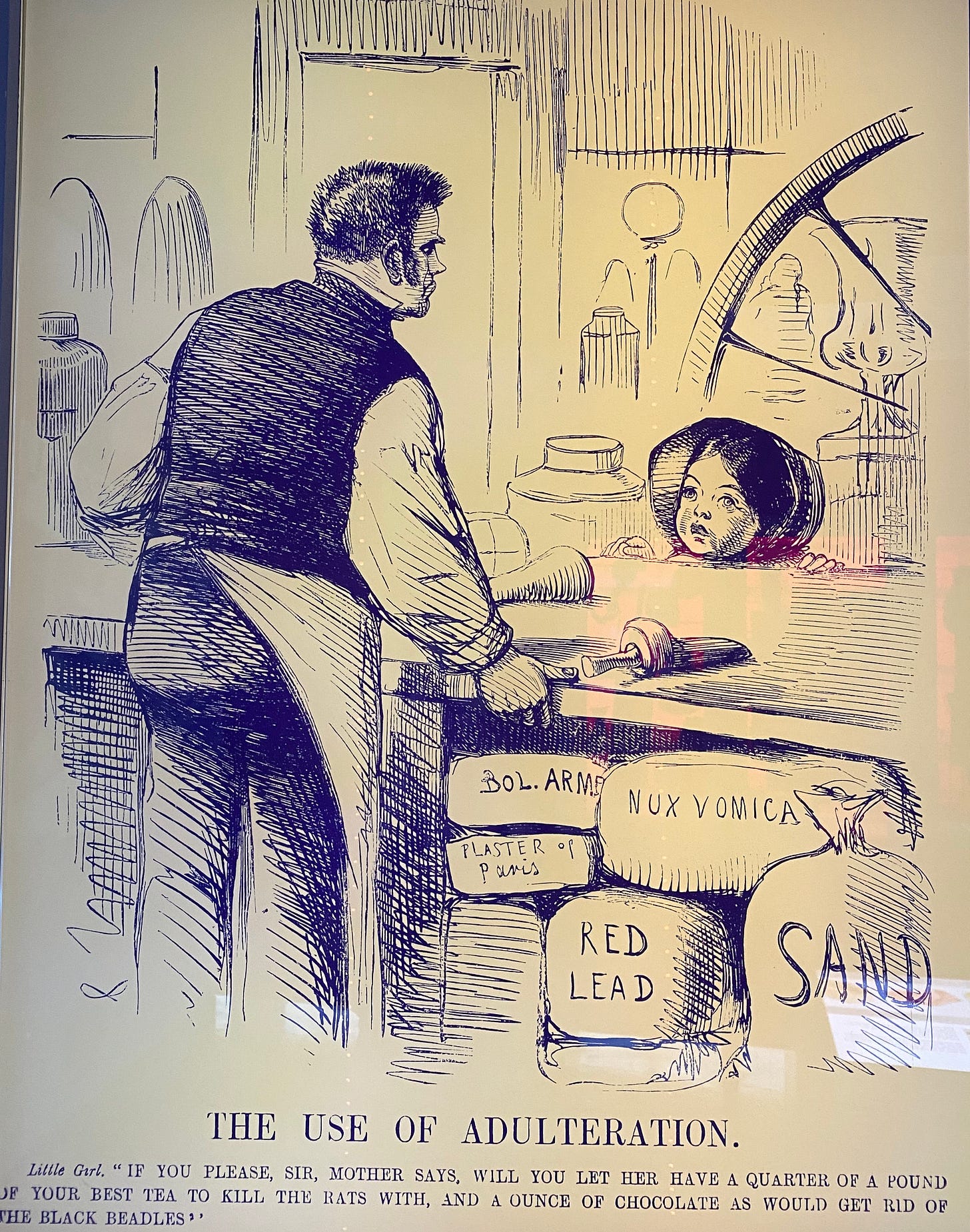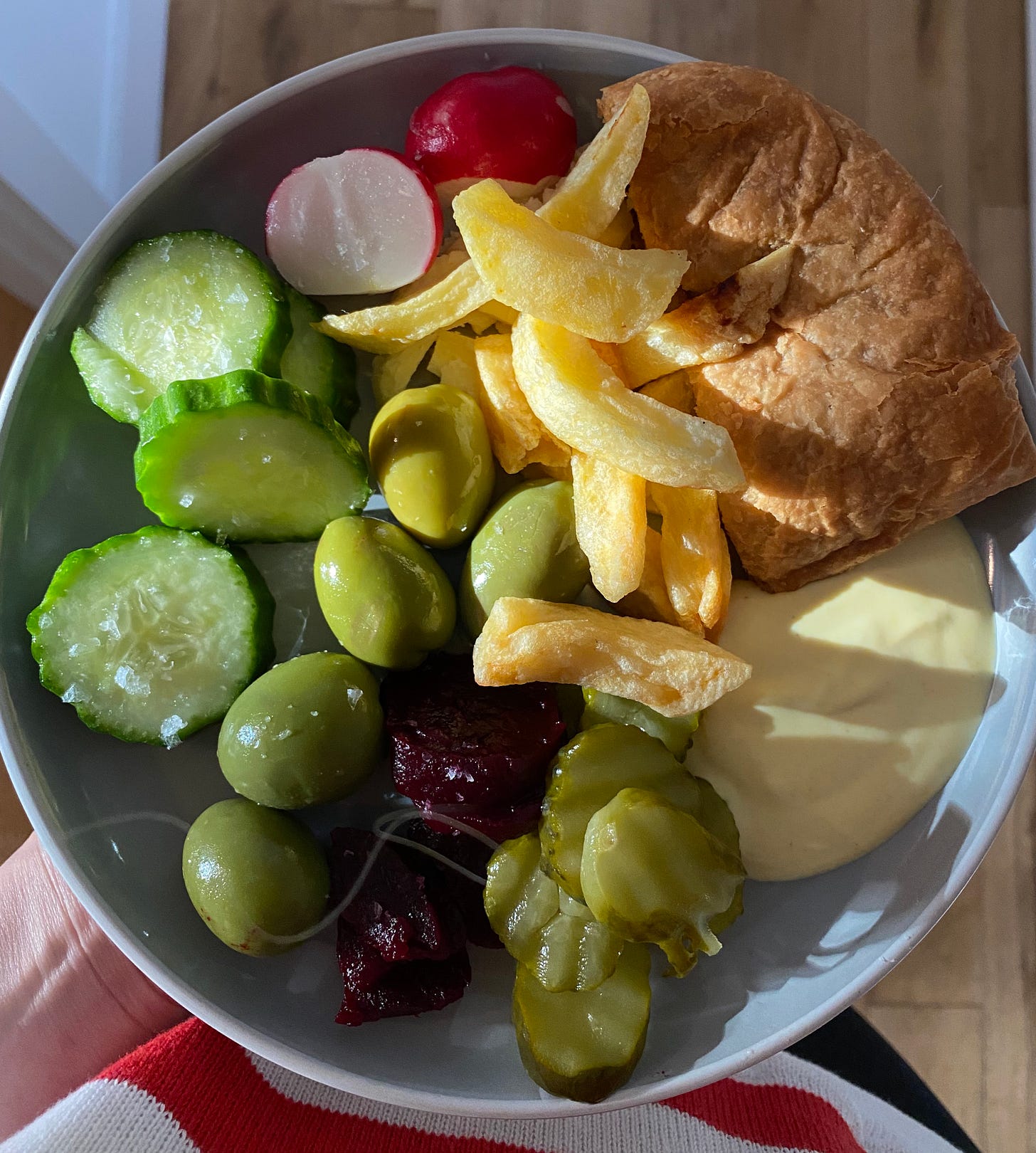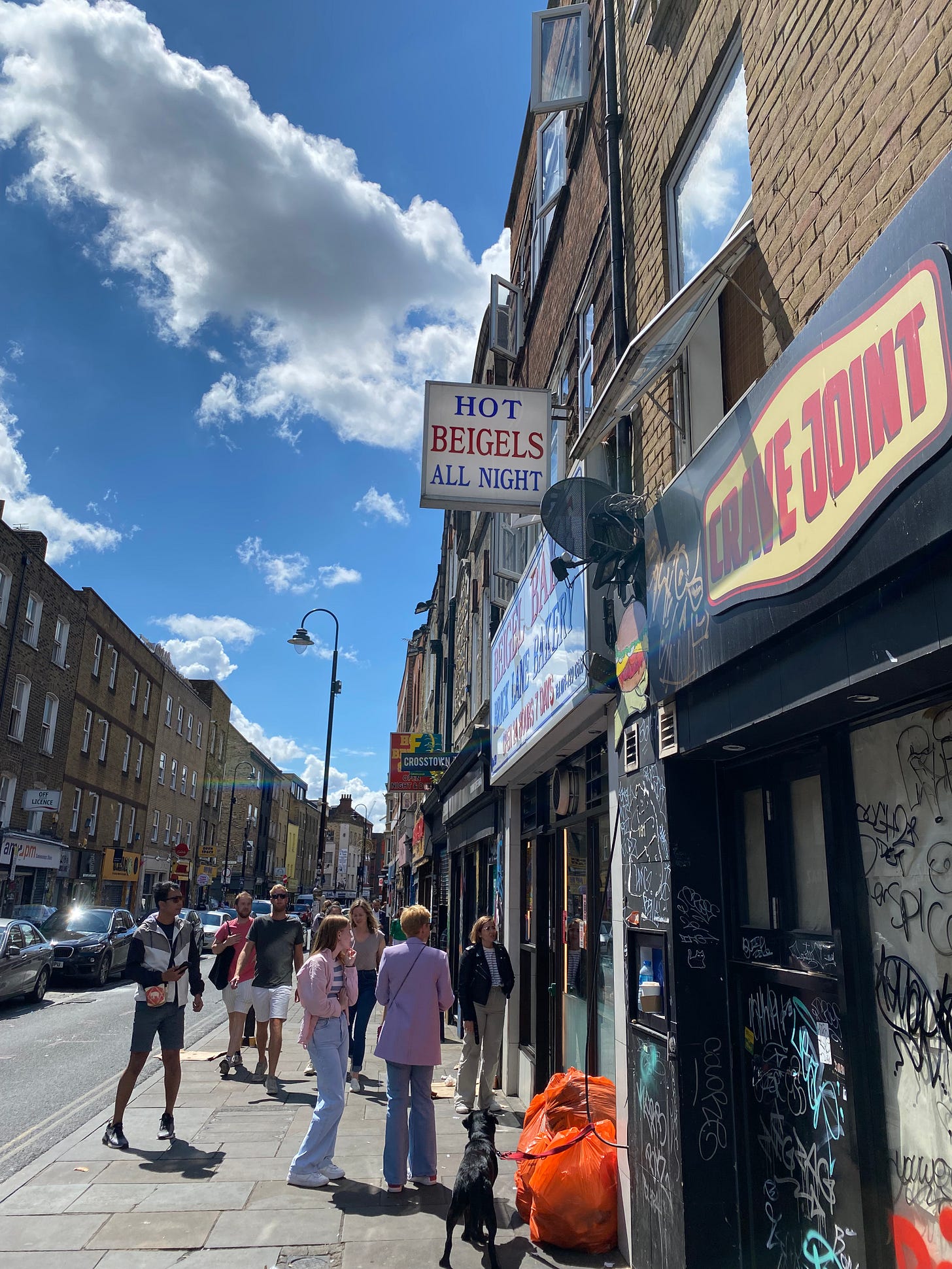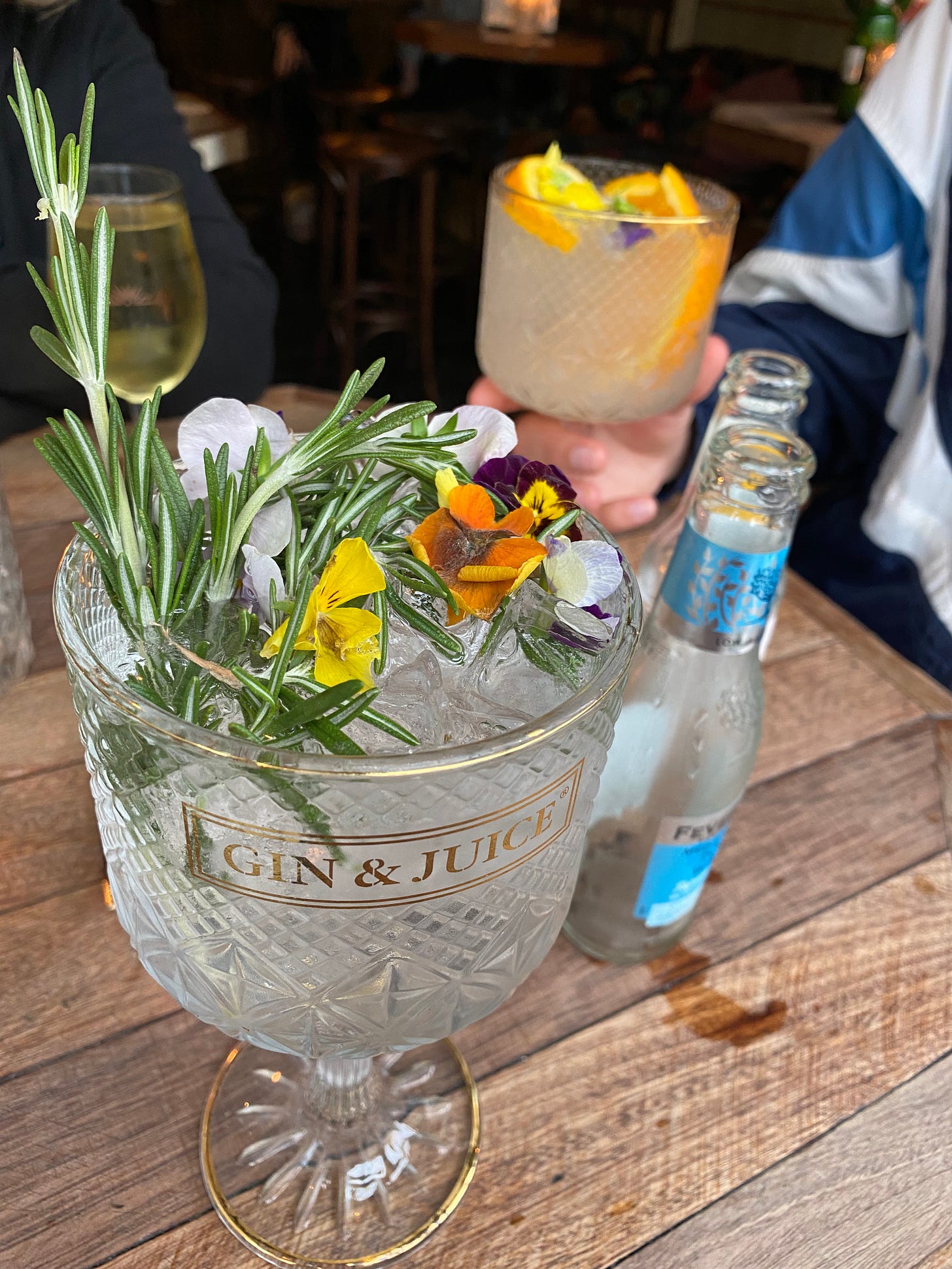Last month we went to Bath, England, for a week, for Braeden’s sister’s wedding. I had never been to Bath, and though the main activity was definitely preparing for the wedding — including me decorating a small cake! — we managed to do some sightseeing and go to the spa, two times.
We also ate very well, with stops at The Raven for pies, The Scallop Shell for fish and chips, and Braeden’s sister’s mother-in-law’s for cheese and pickle sandwiches, which were perfect in their simplicity: cheese, ham (optional), and pickle, basically a chutney made with carrots, rutabaga, onion, and cauliflower.
The wedding was on June 24th, so after a joyous celebration which included the correct amount of ABBA songs to dance to (the correct amount being any number greater than two), we came back to the airbnb and saw the news about Roe v Wade.
Nothing quite kills a love-induced buzz like doomscrolling and realizing this is only the beginning. (To read something better than I could write about this subject, please see Jia Tolentino’s article “Is Abortion Sacred?,” Lyz Lenz’s newsletter, and Jessica Valenti’s newsletter.)
Things were already terrible for a lot of people. And even if you’re personally “fine,” you’d have to actually live under a rock to not absorb at least some of the dread and anger and fear that are constantly swirling around.
I’m not going to tell you that eating something tasty or enjoying a nice drink are going to make you feel better, but eating well is definitely my main coping mechanism. (Coping is different than an improved mood; coping suggests there is a constant problem while an improvement suggests the problem is solved. Boxing and the occasional throttling of glass bottles onto the ground — also good coping mechanisms.)
Anyway, I was talking about vacation, wasn’t I?
After Bath my parents, Braeden, and I took the train to Swansea and Cardiff, in Wales. Curiously almost every person to whom we mentioned our upcoming Swansea trip reacted with a variation of “Why would you go to Swansea?” (except for one younger person who told us all the clubs to go to). The reaction was, I think, because Swansea used to be very industrial and — like most cities based around an industry that eventually disappears (in this case, copper) — at one time was tired and depressed. It seemed like how some people in the States think of Pittsburgh or Baltimore, like there’s nothing good and it’s ugly, but they haven’t actually been or seen the beauty for themselves.
Of course, those reactions only made me want to like Swansea more. (Plus any city where you can walk to a large body of water gets an automatic A+ in my book.)
We didn’t plan much of this portion of the trip and instead had a few things (mostly food) plotted on a map so that we could sort of go where the wind took us. One of those places was the National Waterfront Museum, which was incredible for its breadth of exhibits — on the mining history, on labor strikes, on Welsh LGBTQ+ history and art, on food and farming, and on and on — and also it was free.

One of my favorite things about traveling is going to the local grocery stores, mostly to see what’s up in their condiment section. (And to get salt envy: a box of Maldon salt was a mere £2.30.) This also affords an opportunity to buy vegetables and various pickled things to supplement leftovers — both a good way to save a little money on eating out, but also to save your stomach from all the eating out you’ve been doing.

Once we got to Cardiff, everyone (ok maybe mostly my dad and me) was tired, so while we got out and explored the castle, the Llandaff Cathedral, the arcades, and the world’s oldest record store — now as I type this, sounds like we did a lot!! — the highlight was strolling through the giant Bute Park, with twisty, tangled trees, flowers straight out of Seuss, and flocks of magpies (which are apparently called many things, but let’s go with this British site’s listing: a group of magpies is known as a conventicle, a gulp, a mischief, a tiding, or a tittering). We also took a boat tour of the bay and caught the barrage in action.
Another development this trip was my renewed love of gin. We had a time in college (when I was definitely of legal drinking age) but like many things you love a little too much when you’re young, we eventually grew apart. I’m happy to report that now that I’m a mature and responsible adult, the feelings have changed. And look at these garnishes!!! I’ve used rosemary to garnish many a drink, but not a gin and tonic. The one pictured above was a Welsh gin; from looking at the menu, I *think* it was the Jin Mor: “Distilled in Snowdonia, classic botanicals are enhanced by Halen Môn sea salt, giving a subtle coastal flavour.”
The return of gin also coincided with a book I finished reading recently, The Book of Difficult Fruit by Kate Lebo. One of the fruits she writes about is juniper (technically a cone, not a berry), the botanical that makes gin taste like a Christmas tree. Curiously — perhaps because of this piney, resinous quality, or the fact that most people our age were drinking watery beer or too-sweet mystery punches — my college roommate and I thought of gin as an old man’s drink. But as Lebo notes in her book, it used to be a woman’s drink, and juniper was known for centuries as an abortifacient. (Read more about that in Alicia Kennedy’s newsletter.)
Gin reminds me of my sister, too. She liked Bombay Sapphire.

After Wales we parted ways with my parents and met a few friends in London. London might get debrief in the next newsletter, or…it might not. But in summary: we ate well, we had gin and tonics, we explored, we tried not to freak out about big life changes.
Next time, I’ll share a “recipe,” which is more of a formula: how to prep before you leave on a long trip so that you can cook something easy and tasty when you get home.







